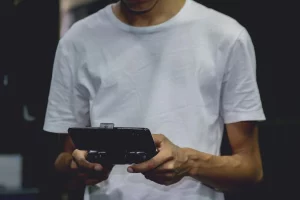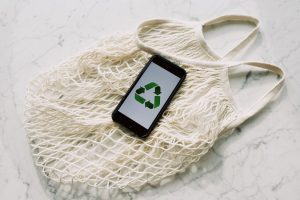How to Fix a Water-Damaged Phone: All Working Methods with Detailed Instructions and Tips


How to Fix a Water-Damaged Phone: All Working Methods with Detailed Instructions and Tips


Introduction
A water-damaged phone can be a distressing experience, but prompt action and the right methods can often save your device. Whether your phone fell in the sink, toilet, or got soaked in a rainstorm, it’s crucial to act quickly and follow the correct steps to increase the chances of successful recovery. In this comprehensive guide, we will explore all the working methods to fix a water-damaged phone, along with detailed instructions and valuable tips to maximize your phone’s chances of survival.
Method 1: Power Off Immediately
Tips:
– If your phone is on when it gets wet, turn it off immediately to prevent a short circuit.
– Avoid pressing any buttons or attempting to use the phone while it’s wet.
The first and most crucial step when dealing with a water-damaged phone is to power it off immediately. Water and electricity do not mix, and leaving the phone on can cause a short circuit, potentially damaging critical components. Here’s how to power off your phone safely:
Remove from Water Source: Retrieve your phone from the water source as quickly as possible.
Turn It Off: Press and hold the power button until the “Power off” or “Shut down” option appears on the screen. Select this option to turn off the phone.
Remove the Battery (if possible): If your phone has a removable battery, take it out carefully to prevent any electric flow. This step is not applicable to phones with non-removable batteries like many modern smartphones.
Method 2: Dry the Exterior
Tips:
– Use a soft cloth or paper towel to gently pat dry the phone’s exterior.
– Avoid using heat sources like hairdryers, as excessive heat can damage the internal components.
After powering off the phone, the next step is to dry the exterior to prevent any water from seeping further into the device. Here’s how to do it:
Gently Pat Dry: Use a soft cloth or paper towel to gently pat dry the outside of the phone. Be cautious not to rub the phone vigorously, as it can push water into the device.
Focus on Ports and Openings: Pay special attention to ports, the charging area, and any other openings where water might have entered.
Method 3: Remove External Accessories
Tips:
– Remove any phone case, screen protector, or accessories attached to the phone.
– These accessories can trap water and slow down the drying process.
To facilitate the drying process, it’s essential to remove any external accessories from the phone. Phone cases, screen protectors, and other attachments can trap water, making it difficult for the device to dry thoroughly. Here’s what you should do:
Take off the Phone Case: If your phone has a protective case, carefully remove it from the device.
Remove Screen Protectors: If you have a screen protector on your phone, peel it off gently.
Check Other Accessories: Remove any other accessories attached to the phone, such as an external battery or clip-on lenses.
Method 4: Use Silica Gel or Rice
Tips:
– Silica gel or rice can help absorb moisture from the phone.
– Avoid inserting silica gel or rice into the charging port or other openings.
Silica gel or rice can be effective at absorbing moisture from a water-damaged phone. These materials help to draw out the water and expedite the drying process. Here’s how to use silica gel or rice to dry your phone:
Place in a Bowl: Take a bowl or container and fill it with silica gel packets or uncooked rice.
Submerge the Phone: If possible, completely bury the phone in the silica gel or rice, ensuring it is fully covered. If not, place the phone in the bowl and surround it with the material.
Keep It Dry: Seal the container with a lid or plastic wrap to keep the environment dry. This will enhance the moisture-absorbing effect.
Let It Sit: Leave the phone in the silica gel or rice for at least 24-48 hours. The longer, the better.
Check for Moisture: After the waiting period, check the phone for any remaining moisture. If it feels dry to the touch, proceed to the next step. If not, repeat the drying process for another 24 hours.
Method 5: Use a Vacuum Cleaner
Tips:
– A vacuum cleaner can help suck out moisture from the phone.
– Use a vacuum cleaner with adjustable suction power or a dedicated “dust” or “blower” setting.
Using a vacuum cleaner with adjustable suction power can help remove moisture from the phone. The vacuum’s suction can draw out the water without causing damage to the internal components. Here’s how to use a vacuum cleaner to dry your phone:
Set to Low Suction: Adjust the vacuum cleaner to its lowest suction setting or use a “dust” or “blower” mode if available.
Hold at a Distance: Hold the vacuum cleaner nozzle a few inches away from the phone’s ports and openings. Avoid direct contact with the phone.
Cover Openings: If possible, cover the phone’s openings (e.g., charging port, speaker, microphone) with your fingers while using the vacuum cleaner. This will direct the suction to the exterior and prevent any water from being pushed further inside.
Vacuum All Sides: Gently move the vacuum cleaner around the phone, ensuring that all sides and openings are covered.
Check for Moisture: After using the vacuum cleaner, check the phone for any remaining moisture. If it feels dry to the touch, proceed to the next step. If not, repeat the process or try another drying method.
Method 6: Use a Hair Dryer (with Caution)
Tips:
– Use a hair dryer on the lowest and coolest setting to avoid overheating the phone.
– Keep the hair dryer at least 6 inches away from the phone.
Using a hair dryer can help evaporate moisture from a water-damaged phone, but it must be done with caution. Excessive heat can damage the phone’s internal components, so it’s essential to use the hair dryer on the lowest and coolest setting. Here’s how to use a hair dryer to dry your phone:
Set to Low Heat: Adjust the hair dryer to its lowest and coolest setting.
Keep a Safe Distance: Hold the hair dryer at least 6 inches away from the phone to prevent overheating.
Move Constantly: Gently move the hair dryer around the phone, ensuring that no single area is exposed to heat for too long.
Check for Moisture: After using the hair dryer, check the phone for any remaining moisture. If it feels dry to the touch, proceed to the next step. If not, repeat the process or try another drying method.
Method 7: Use a Dehumidifier
Tips:
– A dehumidifier can help reduce the overall humidity in the room and aid in drying the phone.
– Place the phone and the dehumidifier in a closed container to create a controlled drying environment.
If you have access to a dehumidifier, you can use it to reduce the humidity in the surrounding air, aiding in the drying process of the water-damaged phone. Here’s how to use a dehumidifier to dry your phone:
Place the Phone in a Closed Container: Find a small, airtight container that can fit your phone. Place the phone inside the container.
Set Up the Dehumidifier: Position the dehumidifier in the same room as the closed container with the phone.
Run the Dehumidifier: Turn on the dehumidifier and set it to its recommended humidity level.
Let It Sit: Allow the dehumidifier to run for several hours or overnight. The reduced humidity in the air will aid in drying the phone.
Check for Moisture: After the designated time, check the phone for any remaining moisture. If it feels dry to the touch, proceed to the next step. If not, repeat the process or try another drying method.
Method 8: Use Desiccant Packs
Tips:
– Desiccant packs are moisture-absorbing packets often found in shoeboxes or electronics packaging.
– Place the phone and desiccant packs in an enclosed container for better results.
Desiccant packs are small packets that contain moisture-absorbing materials. They can be highly effective in removing moisture from a water-damaged phone. Here’s how to use desiccant packs to dry your phone:
Gather Desiccant Packs: Collect enough desiccant packs to cover the phone fully.
Place in an Enclosed Container: Find a small, airtight container that can fit both the phone and the desiccant packs. Place the phone inside the container with the desiccant packs.
Seal the Container: Close the container tightly to create a controlled drying environment.
Let It Sit: Allow the phone and desiccant packs to sit inside the container for at least 24-48 hours. The desiccant packs will draw out the moisture from the phone.
Check for Moisture: After the waiting period, check the phone for any remaining moisture. If it feels dry to the touch, proceed to the next step. If not, repeat the process or try another drying method.
Method 9: Wait and Be Patient
Tips:
– Allow the phone to air dry in a well-ventilated area for an extended period.
– Patience is key, as rushing the process can lead to further damage.
One of the most straightforward and often overlooked methods for fixing a water-damaged phone is simply to wait and let it air dry naturally. While it requires patience, air drying can be effective in removing moisture from the device. Here’s how to air dry your phone:
Find a Dry Spot: Place the phone in a well-ventilated area with low humidity.
Avoid Direct Sunlight: Keep the phone away from direct sunlight, as excessive heat can damage the internal components.
Let It Sit: Allow the phone to air dry for at least 48-72 hours. Resist the temptation to check it frequently during this time.
Check for Moisture: After the designated time, check the phone for any remaining moisture. If it feels dry to the touch, proceed to the next step. If not, repeat the drying process or try another method.
Method 10: Use Isopropyl Alcohol (90% or higher)
Tips:
– Isopropyl alcohol can help displace water and aid in drying the phone.
– Use 90% or higher concentration of isopropyl alcohol for better results.
Isopropyl alcohol can be used to displace water from the phone’s components and accelerate the drying process. It helps to remove any remaining moisture that might be trapped within the device. Here’s how to use isopropyl alcohol to dry your phone:
Power Off and Disconnect: Ensure the phone is turned off and disconnected from any power sources.
Dampen a Cloth: Dampen a lint-free cloth with isopropyl alcohol (90% or higher concentration). It should be damp, not soaking wet.
Wipe Gently: Gently wipe the exterior of the phone with the damp cloth to displace water.
Use Cotton Swabs: Dip cotton swabs into isopropyl alcohol and use them to reach small openings and components inside the phone.
Let It Dry: After using isopropyl alcohol, let the phone air dry for at least an hour before attempting to turn it on.
Check for Moisture: After the designated time, check the phone for any remaining moisture. If it feels dry to the touch, proceed to the next step. If not, repeat the process or try another drying method.
Method 11: Use a Phone Drying Kit
Tips:
– Phone drying kits contain materials specifically designed for water-damaged phones.
– Follow the instructions provided with the kit for best results.
Phone drying kits are commercially available and contain specialized materials designed to remove moisture from water-damaged phones. These kits often include desiccant packs, isopropyl alcohol, and other helpful items. Here’s how to use a phone drying kit:
Obtain a Phone Drying Kit: Purchase a phone drying kit from a reputable seller or retailer.
Follow Instructions: Read and follow the instructions provided with the kit carefully. The kit will likely include specific steps for drying your phone.
Let It Sit: After following the instructions, let the phone sit for the recommended time to allow the kit materials to absorb moisture.
Check for Moisture: After the designated time, check the phone for any remaining moisture. If it feels dry to the touch, proceed to the next step. If not, repeat the process or try another drying method.
Method 12: Seek Professional Help
Tips:
– If none of the DIY methods work, it’s best to seek help from a professional technician.
– Professional repair services might have advanced tools and expertise to save your water-damaged phone.
If all the DIY methods fail to revive your water-damaged phone, or if you are unsure about attempting the repairs yourself, it’s time to seek professional help. Professional technicians specializing in phone repairs might have the necessary tools and expertise to fix your water-damaged phone. Here’s what you should do:
Research Reputable Repair Services: Look for reputable phone repair services in your area or contact the phone manufacturer for authorized repair centers.
Explain the Issue: Inform the technician about the water damage and any previous steps you’ve taken to dry the phone.
Trust the Experts: Allow the professionals to assess the damage and determine the best course of action for repair.
Conclusion
Dealing with a water-damaged phone can be a stressful situation, but acting quickly and using the right methods can significantly increase the chances of saving your device. By following these working methods and important tips, you can potentially revive a water-damaged phone and avoid the need for a costly replacement. Remember to stay patient throughout the drying process, and if all else fails, don’t hesitate to seek help from a professional phone repair service.








